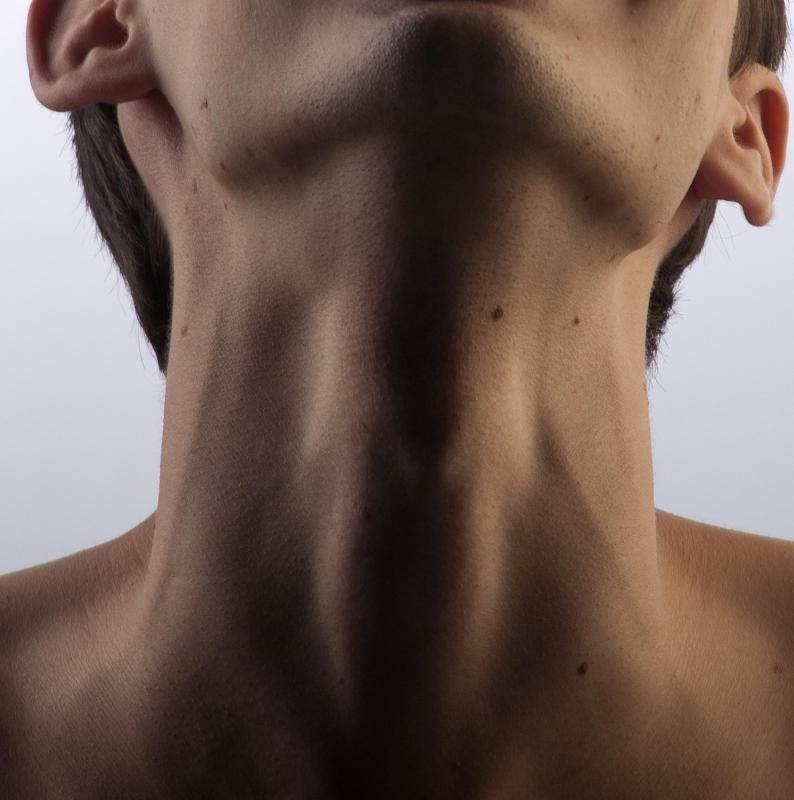At TheHealthBoard, we're committed to delivering accurate, trustworthy information. Our expert-authored content is rigorously fact-checked and sourced from credible authorities. Discover how we uphold the highest standards in providing you with reliable knowledge.
What is Epithelium?
Epithelium is one of the four main tissue types in the body, along with muscle, connective tissue, and nervous tissue. It functions mainly to line surfaces in the body, and lies on top of connective tissue, to which it is anchored by a basement membrane consisting mainly of collagen fibers. Glands are also composed of epithelial tissue.
Epithelial tissue is supplied with nerves, but not with blood vessels. It receives nutrition from the underlying connective tissue through diffusion. Epithelial tissue has many functions, including protection, secretion, selective absorption, excretion, diffusion, and sensation.

Different types of epithelial tissue are distinguished based on the shape of the cells and the number of cell layers. Epithelial tissue consisting of a single layer of cells is classified as simple epithelium, while multiple cell layers constitute stratified epithelium. Epithelial cells may be squamous or flat, cuboidal, or columnar. Squamous cells are wider than they are tall, while columnar cells are taller than they are wide, and cuboidal cells are about equal in height, width, and depth.

Simple squamous tissue facilitates diffusion because of its thinness. It lines the blood and lymph vessels, as well as the internal body cavities. Simple cuboidal epithelial tissue is often found in tissues specialized for secretion or absorption, such as glands. Simple columnar epithelium lines parts of the female reproductive system and much of the digestive system, including the stomach and intestines.

Squamous and cuboidal epithelium may be simple or stratified, while the columnar type may be simple, stratified, or pseudostratified. Pseudostratified columnar epithelium is made of cuboidal cells of varying heights, which gives it the microscopic appearance of being stratified, though there is actually only a single layer of cells. It is found in parts of the respiratory and urinary systems, as well as in the male reproductive system. Pseudostratified epithelial tissue may also feature cilia, fine hair-like projections on the surface of the tissue that serve to increase surface area and to move substances across the surface of the tissue in a particular direction.

There are also two specialized types of stratified epithelium: keratinized and transitional. Keratinized epithelial tissue is found only on the external surfaces of the body, including the inside of the mouth. It is characterized by an outermost layer of dead cells rich in the protein keratin, making the tissue surface tough and waterproof. Transitional tissue consists of layers of cells that can stretch, appearing cuboidal or columnar when at rest and squamous when stretched. This type of tissue, sometimes called the urothelium, is found only in the urinary system structures of the renal pelvis, bladder, ureter, and urethra.
AS FEATURED ON:
AS FEATURED ON:
















Discussion Comments
So epithelium means the cell that lines the outer surfaces? I am quite confused. For example, the fimbriae contains a ciliated epithelial lining which helps draw the egg into the oviducts. However, if epithelial refers to the cell 'outside' how can it serve its function of drawing the egg which is essentially 'inside'? I'm sorry, but I just don't really get the idea of epithelium. So are endothelium and epithelium different or actually similar?
@alisha-- Epithelium is not just found in animals but also in fungi and plants. They do vary in characteristics though, the epithelium in animals and plants are not the same. In plants, for example, the epithelium is mostly shaped like epithelium squamous cells in animals. They are short and wide.
Maybe the one common characteristic of all epithelium types in different organisms is that the cells of the epithelium are very closely packed. And that is because it's a barrier.
The article gave a good overview of its function and being a barrier is definitely one of the most important. It has to protect the other tissues that are underneath. But it also works to regulate activity between itself and other tissues. For example, it is responsible for transporting necessary molecules to underlying tissues and systems. It's also responsible for getting rid of unwanted substances out of the system (think of sweat).
@burcidi- Yea, I am.
Do you know if epithelium is found only in animals? Is it found in other organisms too?
And what's the primary role of the epithelium. Is it just a barrier? What else does it do?
In biology class, our instructor gave us hand outs which showed keratinized epithelial tissue in the palm of our hands. It was really interesting to see because it was not at all what I expected.
I thought that the cells would be completely flattened because I always imagined the layers of skin to be flat. That is somewhat true because the cells were almost flat at the surface of the epithelial tissue of our hand. But if you looked deeper down where the epithelial tissue meets connective tissue, the cells are pretty round.
And the tissues are actually pretty bumpy. We can't see this with the naked eye looking at our hand, but when you look with a microscope, it can be seen.
We're going to learn about the other types of epithelium next week. It'll be interesting to compare keratinized with transitional and stratified and squamous epithelium.
Is anyone else studying this in class right now?
Post your comments